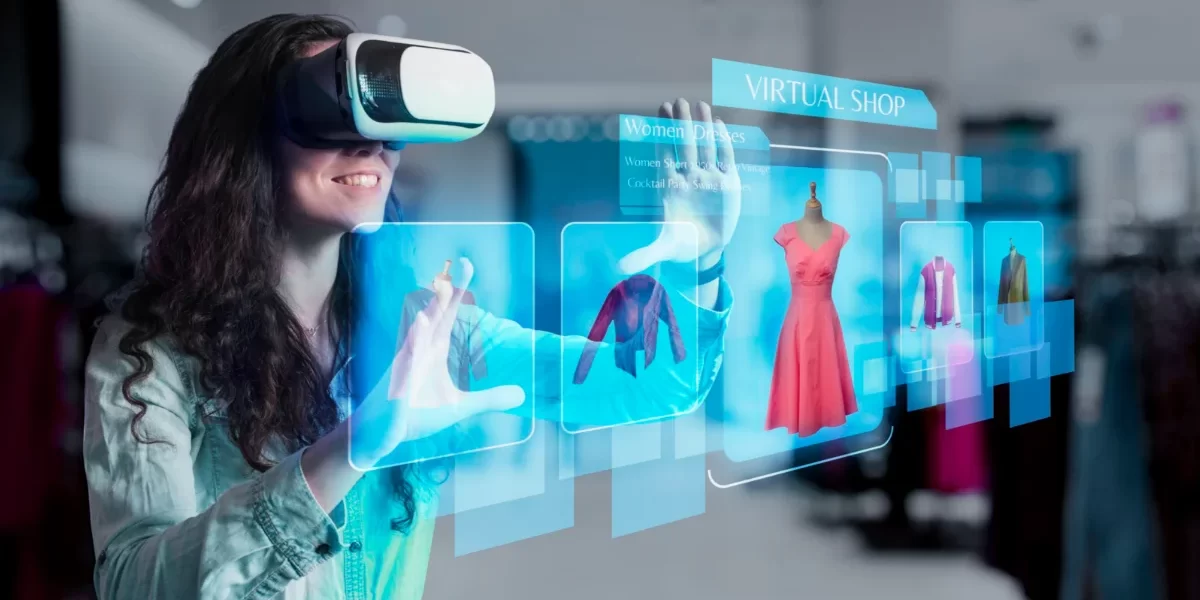Augmented reality (AR) has also ushered in a new online landscape of retail sales by blurring the line between the physical and online worlds, from Snapchat’s Lens filters to when technology companies such as Niantic, Google, and Nintendo joined forces to develop Pokémon Go.
She points out that AR lets you see how a product would look on you, perhaps in your home, reducing returns while adding categories for things you may never have tried before.
Increased Conversion Rates
In a recession, retail can be a tough business to break even in; AR can offer the means to boost sales (and customer satisfaction) in both physical retail outlets and online shops.
AR can dramatically increase your retail conversion rate; internal data from Shopify showed that merchants who used 3D increased their conversions by an outstanding 94 per cent.
This could be an AR app where customers try on products in their space or on themselves, two simple features that can lead to a dramatic reduction in returns, which translate into millions in labour costs for retailers every year – not to mention an increase in post-purchase satisfaction. Finally, AR can lead to category expansion because you’re bringing new customers to your brand and product categories as part of your offering.
Enhanced Customer Engagement
AR technology allows brands to take customers on a visual journey of how Starbucks takes coffee beans and turns them into what customers love, thus increasing the time they spend with a customer – which can increase brand health by increasing touchpoints and engagement with their customers.
Aware of this issue, some companies are using augmented reality to help reduce the number of product returns by giving customers the opportunity to see how products would look on them, or in their homes and workplaces, before buying. L’Oreal’s Makeup Genius app, for instance, lets customers virtually test the effect of make-up before they buy: they can see what they will look like before they take the risk of buying the wrong shade or size. So AR can also be a powerful retail solution, providing remote technical support for brands, as well as interactive user manuals and real-time translation services.
Increased Loyalty
Augmented reality offers a way for consumers to interact with virtual editions of products in their surroundings (think of the Swedish furniture retailer IKEA’s mobile app that allows shoppers to point their phones at their home and virtually place pieces of furniture in each room; return rates that were as high as 50 per cent before the app’s release have been cut to around five per cent). But it will develop into a space that allows brands to set themselves apart in the market and engage with consumers in ever more innovative and meaningful ways.
Sephora and other beauty brands used the help of AR (or ‘virtual artist’) tools; customers can try on and purchase lipsticks and other products without having to test out the various shades of red from aisle to aisle in real life with an actual makeup artist – benefiting both buyers who can never get the colour right at home and online sales (since augmented reality reduces ambiguity and boosts confidence in shopping e-commerce stores, ultimately leading to a lift in retail sales).
AR also provides a great way to increase customer satisfaction, which can lead to higher conversion rates and new avenues for retailers to increase their customer loyalty rewards programmes.
Enhanced Product Knowledge
Virtual trying on and visualising products before purchase can be valuable, and sales can go up substantially – especially for categories in which consumers need to try on varieties of styles, like clothing or shoes.
IKEA has adopted AR so consumers can preview pieces of furniture in their homes virtually, while Warby Parker utilises AR so consumers can try on and ultimately purchase Warby Parker frames from their catalogue without ever stepping foot into a store. So whether it’s AR improving online shopping by allowing consumers to virtually ‘try on’ items from afar such as clothes or make-up, or allowing shoppers to see items in their own homes, the level of satisfaction with these transactions will reduce return rates and increase customer satisfaction. Clearly, AR is a technology that retailers need to invest in.
AR is also able to deliver a disorienting sense of physical presence that creates an impetus to purchase products categories they hadn’t considered buying before (Heller Tan, 2014). This feature underscores category expansion and sales growth.
Enhanced Navigation
AR is offering customers with a whole new set of experiences that increase brand awareness. For retail in particular, these experiences offer shoppers more engaging and responsive in-store and marketing campaigns, helping smaller and niche brands compete more effectively with larger retailers.
AR can also improve the decision making of retail buyers: by allowing them to evaluate products virtually in the context of their own consumption, it reduces uncertainty and advances the adoption of desirable products (ie, those that were previously doubtful). Likewise, data collected on the use of AR apps to show product information can be aggregated by retailers to inform product design, after customers finally decide that they like a product. For example, Ikea’s Place app allows customers to virtually place furniture (such as sofas and lamps) in their households.






